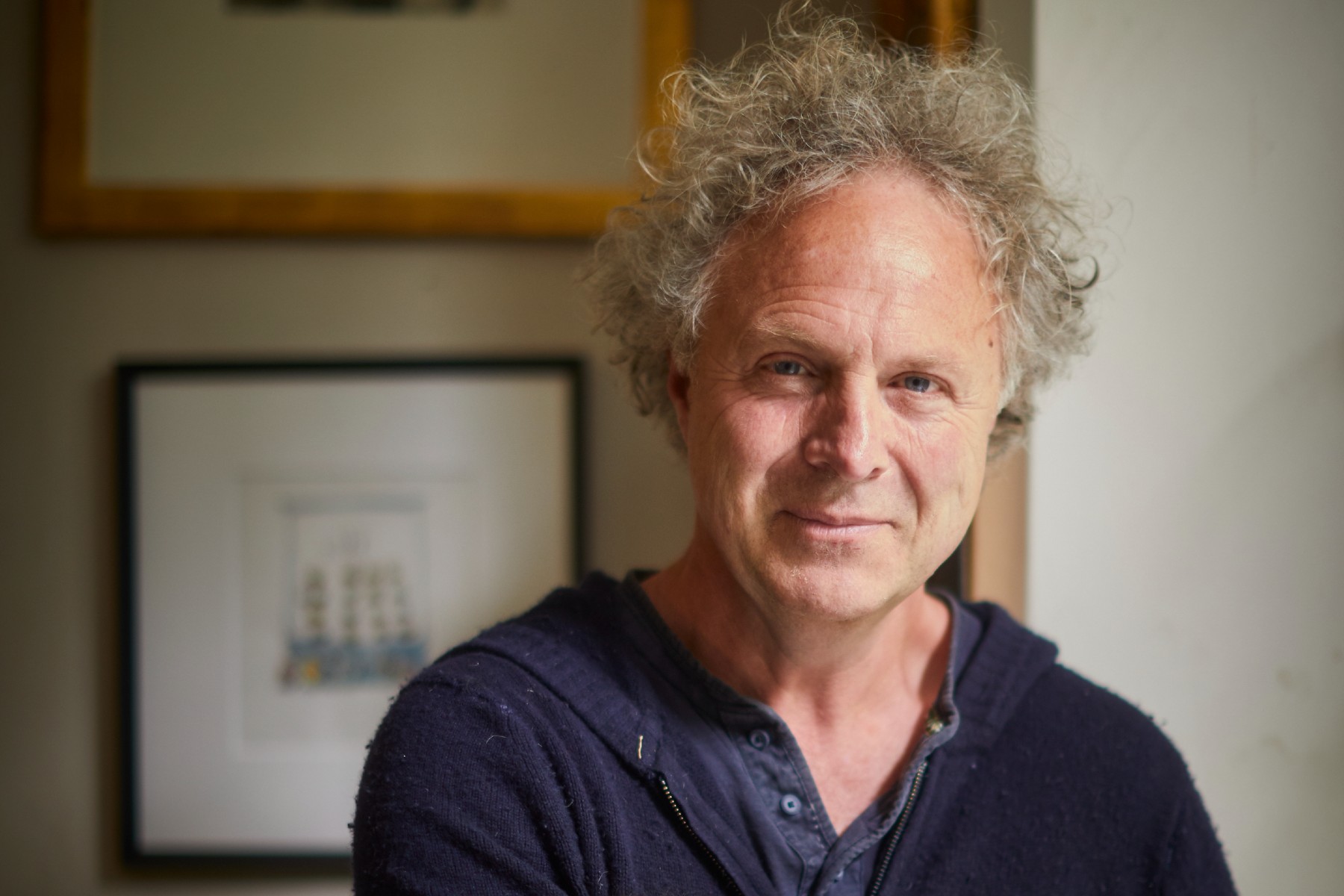- Home |
- Search Results |
- An interview with Charlie Mackesy
An interview with Charlie Mackesy
The author behind the heartfelt brushwork of The Boy, The Mole, The Fox and The Horse: The Animated Story on Tolstoy, lost love and… falling over in a rhinoceros costume.

His drawings are ubiquitous – maybe you’ve seen them in the streets, in schools and hospitals, online, or in his bestselling The Boy, The Mole, The Fox and The Horse – but the book’s author, Charlie Mackesy, is a somewhat less omnipresent figure.
Quiet and thoughtful, Mackesy tends to let his work speak for itself, but in interview, he’s magnanimous and animated, easy to engage in deep conversation but just as apt to burst out laughing at, say, the memory of dressing up as a rhinoceros and not being able to get back up.
To celebrate the release of hew new book – The Boy, the Mole, the Fox and the Horse: The Animated Story, which will hit television screens across the UK this Christmas – we got to know the author and illustrator better, as he opened up about his first literary loves, the genius of Anna Karenina, and the 20th Century artist who Mackesy says “shaped how I understood illustration and writing”.
Which writer do you most admire and why?
This is going to sound odd, the author that probably influenced me the most is probably Salinger. I read The Catcher in the Rye when I was young, and kept going back to it because he broke all the rules and wrote honestly. It changed my view of literature. He broke out of the way you should do things. I remember reading the first sentence over and over again, smiling at it. I admire him for writing that when he did, with that level of honesty.
What’s the strangest job you’ve had outside being an author?
I’ve had a lot of jobs! I used to wear a rhinoceros outfit, and do dance routines on stages to raise money for Save the Rhino. I even did one on stage just before Placido Domingo was about to sing. There were eight rhinos – eight people in costume – and one of them fell over, and we all fell, but the nature of the suits meant that we couldn’t get up on our own, and we were all dragged off the stage on our backs. It was a disaster. I quit after that.
Tell us about a book you’ve reread many times.
Catcher in the Rye, obviously. I think I’ve read Birdsong quite a few times. I have read Edward Ardizzone, his books, over and over again. He was an illustrator, writer in the 1960s and 70s who shaped how I understood illustration and writing. He’s lodged in my psyche; I have a pile of his books; there’s something about them that makes me, even now, go back to them. There’s a beauty and a peace in them.
And Tolstoy – I’ve gone back and reread Anna Karenina a few times. It’s extraordinary. You know how some bits stick with you? Where I was brought up, in Northumberland, I worked with sheep farmers as a boy, and helped them shear sheep. I loved their connection with the land, and used to watch how they went about things; I knew that was rare. And there’s a description in Tolstoy about how they cut hay – there’s an old man who moves slowly with his scythe, and how sure he is, and the rhythm of it. I remember knowing exactly what he was writing about.
What the best piece of writing advice you’ve ever been given?
Write about what you know and really feel.
What makes you most happy?
Lying in a field with my friends and my dog, laughing, listening to good music.
What’s your biggest regret?
Oh, gosh. I was in love with a girl, and I was too scared to say it. I was 25.
What’s your ideal writing scenario?
How I do it, really, is I walk a lot, and bike a lot, and think, and listen to music. And then, I have a notebook, and I’ll stop when I’ve thought of something, and I’ll draw it or write it down. So the preliminary step is walking around and listening to music; then later I boil the kettle, and settle, light the fire, and write. Or in a café, really; I love cafés. I like working there and getting to know the people there.
...and your ideal reading one?
I quite like listening to audiobooks. At the moment I’m listening to A Short History of Nearly Everything by Bill Bryson, and I do that as I walk along the beach. I like reading in bed, too, with the window wide open so I can hear the trees rustling outside.
What’s your favourite book you’ve read this year?
Mary Oliver’s book Dog Songs, which is a book of poetry. They’re just the most beautiful poems. It’s had a really profound effect on me. I’m also reading Olive Kitteridge by Elizabeth Strout, and it’s absolutely beautiful.
What inspired you to write your book?
It was more a feeling – about us, how we are and what we really need as people. And what I wish I’d known, what I could tell myself if I could go back in time. Perhaps I’d have shown myself some of this stuff about love and kindness and self-acceptance, to take the worry out and make me feel more connected.
And people inspired me, really. I have some close friends who find life very difficult, and when I sent them, texted them drawings and I saw their responses, that inspired me. I saw that the drawings had a small effect on them. The book really made itself after that.
The Boy, The Mole, The Fox and The Horse: The Animated Story by Charlie Mackesy is out now.